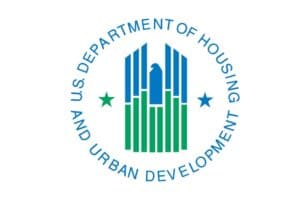Rental Assistance Demonstration (RAD)

RAD and Its Current and Projected Consumption of LIHTCs
In a new CityScape article, Alex Schwartz of the New School and Kirk McClure of the University of Kansas explore how the RAD program can “consume” LIHTCs.

New Section Three Rule in RAD Public Housing Conversions Webinar – April 20
HUD will host a webinar at 3:30 pm ET on April 20 to provide an overview of the new Section 3 rule and its implementation in Rental Assistance Demonstration (RAD) conversions. In the fall, HUD updated the Section Three rule in order to focus on economic opportunity outcomes while simultaneously reducing regulatory burden, improving Section Three’s effectiveness, streamlining some processes that have not yielded significant benefits and encouraging HUD grantees to focus on sustained employment for low- and very low-income individuals.

RAD & Section 18 Blend Webinar to be Held Feb. 17
HUD and Enterprise Community Partners will host a webinar from 1-3 p.m. ET on February 17 on the Rental Assistance Demonstration (RAD) and Section 18 new blend options described in PIH Notice 2021-07. Register here.

Section 18 Update Offers New Section 18/RAD Blends & Other Flexibilities
On January 19, HUD published Notice PIH 2021-07 superseding and replacing its 2018 Section 18 notice regarding the demolition and/or disposition of public housing property, eligibility for tenant protection vouchers (TPV) and associated requirements.

$10 Billion Invested in RAD-Converted Public Housing
In just seven years since the first public housing property converted under the Rental Assistance Demonstration (RAD), Public Housing Agencies (PHAs) and their partners have cleared another major milestone—surpassing more than $10 billion for the improvement and replacement of converting public housing properties.

MassHousing and the Boston Housing Authority Announce Financing for the Third Phase of the Redevelopment of the Anne M. Lynch Homes at Old Colony in South Boston
MassHousing closed on a total of $78.8 million in financing to Beacon Communities LLC, to complete the third phase of the redevelopment of obsolete public housing at the Anne M. Lynch Homes at Old Colony in South Boston.

HUD Published COVID-19, RAD and CARES Guidance
HUD published Notice Housing H-2020-09/PIH-2020-26 on providing supplemental COVID-19 guidance for PHAs and owners converting properties through RAD. The Notice describes the availability of Operating Fund Coronavirus Aid, Relief and Economic Security (CARES) Act funds for public housing properties that have converted or that will convert in calendar year 2020 and that are still supported through public housing appropriations.

HUD Releases RAD/PBRA Policy Quick Reference Guide
HUD released an updated Policy Quick Reference Guide outlining significant multifamily operational requirements to assist owners following Rental Assistance Demonstration (RAD) assistance conversions to Section 8 Project Based Rental Assistance (PBRA). Information provided in this guide does not apply to conversions of assistance pursuant to RAD Section 8 Project Based Vouchers.

HUD Releases Post-Conversion Processing Guide
HUD has posted to the RAD Resource Desk a new “Post-Conversion Approval Processing Guide,” which provides information to Owners and PHAs on how to process post-closing issues that may arise after RAD conversion, some of which require HUD approval.

Research Finds Positive Outcomes for Residents in RAD Converted Properties
In a recent issue of Health Affairs focusing on investments in social determinants of health, a new study examined how renovations of a property in Queens, NY that converted through RAD may improve the health of public housing residents.
HUD released the full report, “Examining the Effects of the Rental Assistance Demonstration (RAD) on Children Living in Public Housing in Fresno, California,” which assessed outcomes and the well-being of children living in developments that have undergone rehab and conversion under RAD.

HUD NOFA Offers $750,000 to Study the Impact of RAD on Children
HUD’s office of Policy Development and Research published a NOFA to study the “Impact of RAD on Children in HUD Assisted Households.” The NOFA makes $750,000 in funding available to be split among one or two potential awardees. The objective is to support research project(s) that will produce policy-relevant evidence on the implementation of the RAD program and its effect on children’s well-being

HUD Solicits Comments on Information Collection for Evaluation of RAD Choice Mobility, Long-Term Affordability
HUD published a 60-day notice of proposed information collection on the evaluation of the Rental Assistance Demonstration (RAD) program’s choice mobility option and long-term affordability. Congress requested and HUD provided two previous evaluations of RAD and the 2018 budget legislation that extended and expanded RAD provided funds to conduct a follow-up evaluation. This notice provides an opportunity to comment on the information collection. Those